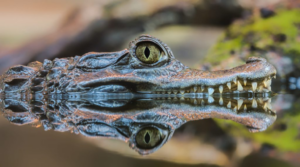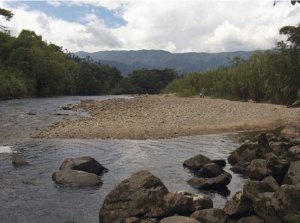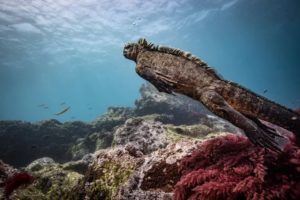Whale sharks are truly magnificent creatures that grace warm and temperate seas all around the planet yet are an elusive species to find. The Galapagos Islands are arguably the very best place in the world to dive with these magnificent giants of the deep. As the largest fish in the world, measuring an average of 10-12 metres in length (maximum length of 18 metres) and weighing approximately 15 tonnes, it captivates the hearts and minds of nature enthusiasts. In this article, we will delve into the intriguing world of the whale shark, uncovering its feeding habits, migratory patterns and significance as a tourist attraction.
Majestic Giants Filter: Feeding for Survival
The whale shark, despite its imposing size, poses no threat to humans. As a matter of fact, this gentle giant sustains itself solely on plankton, small fish, and crustaceans. Although its mouth can stretch to four feet wide, a whale shark’s teeth are so tiny that it is incapable of biting or chewing. Engaging in filter feeding, it skillfully employs its gills to sift through vast quantities of water, extracting the nourishment it needs for survival. Whale sharks can process more than 6,000 litres of water an hour through their gills! This remarkable feeding technique enables the whale shark to maintain its ecological role in the marine ecosystem while avoiding any potential harm to other species, including humans.
Whale sharks travel immense distances around the globe to exploit rich food patches. In an average year, a shark could travel 10,000 kilometres in its constant search for food. This distance is made even more impressive by the fact they move at speeds of little more than three miles per hour. They are surprisingly inefficient swimmers and need to use their entire body in the act of swimming – something that is very unusual for fish species.
Unique Spot Patterns for Identifying and Tracking Whale Sharks
The upper surface and flanks of whale sharks are grey-blue and covered with a pattern of white spots. Like fingerprints in humans, these spots are unique to individuals, enabling researchers to identify and track different whale sharks. Their distinctive spots have led to local names, such as “marokintana” in the Malagasy language in Madagascar which means “many stars”.
Migratory Wonders: From Warm Waters to Galapagos Islands
Spanning across the globe, whale sharks are migratory beings, seeking out warm waters to thrive. The Galapagos Islands serve as a year-round haven for these magnificent creatures, although they become more prevalent during the winter season. The archipelago’s pristine waters, teeming with life, provide an ideal environment for the whale sharks to fulfil their needs. Undoubtedly, witnessing these majestic animals in their natural habitat is a dream come true for many visitors, making the Galapagos Islands a sought-after destination for ecotourism.
Mysteries of Whale Shark Reproduction and Lifespan
A lot is still unknown about these mysterious creatures. For example, we are still unaware of the locations in which whale sharks give birth. We do know, however, that they are ovoviviparous, which means their embryos initially develop inside an egg that they emerge from whilst still inside the mother, resulting in the birth of live young. For those that are born, it’s thought that less than 10% survive to adulthood, but those that do may live to 150!
Galapagos: Prime Whale Shark Viewing Locations and Seasons
Whale sharks congregate in the far northwest of the archipelago at Darwin and Wolf Islands. You can also observe whale sharks on the islands of Isabela and Fernandina. The waters around Darwin’s Arch are a particularly popular whale shark feeding ground, where naturally upwelling currents attract plankton. The principal Galapagos whale shark season is from June to November, with peak viewing usually during August and September. During this time the cold Humboldt current flows into Galapagos water from the south, cooling the ocean and bringing rich nutrients that are perfect for all marine species.
Although many whale shark individuals spend no more than one day here before moving on, some do choose to stay for a longer period. Whale shark behaviour is unpredictable, so sightings are also highly possible at other times of the year. Of the individuals who visit the islands, 90% are pregnant females. Again, little is understood about this unusual behaviour. For a chance to swim alongside these mysterious and enigmatic giants of the sea, come and visit the Galapagos!

Foto: El Universo (1 Marzo 2018)
Foto: Simon J Pierce




